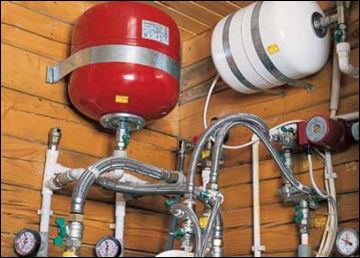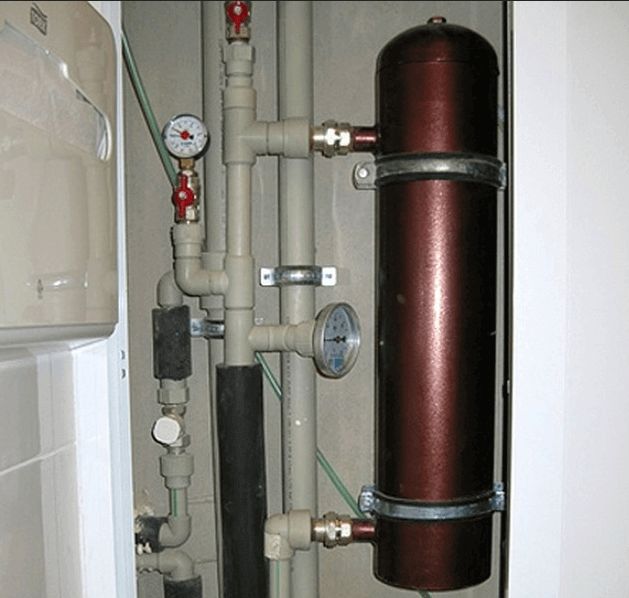Rules for the design and safe operation of steam boilers
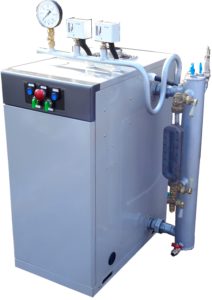 A steam boiler is one of the oldest devices for converting thermal energy into mechanical work, the working fluid in which is water steam. The design of steam boilers has not changed for hundreds of years. By definition, this is a device designed to produce high-potential water vapor. The market offers a large number of different models of various designs, used both in everyday life and in industry. In this article we will get acquainted with the operating principle, operating rules and scope of application of steam boilers.
A steam boiler is one of the oldest devices for converting thermal energy into mechanical work, the working fluid in which is water steam. The design of steam boilers has not changed for hundreds of years. By definition, this is a device designed to produce high-potential water vapor. The market offers a large number of different models of various designs, used both in everyday life and in industry. In this article we will get acquainted with the operating principle, operating rules and scope of application of steam boilers.
The content of the article
Operating principle and device
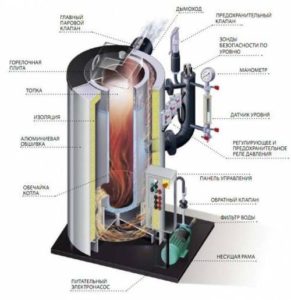 The basic principle of operation of steam boilers of various types is unchanged and simple - water is heated in a closed volume and converted into water vapor, which is subsequently used to perform useful work. The energy source for heating can be the energy of the sun, earth, or more traditional gas, solid fuel or electricity.
The basic principle of operation of steam boilers of various types is unchanged and simple - water is heated in a closed volume and converted into water vapor, which is subsequently used to perform useful work. The energy source for heating can be the energy of the sun, earth, or more traditional gas, solid fuel or electricity.
Depending on the purpose, the steam produced is divided into two types: saturated and superheated. Saturated steam is characterized by a temperature of about 100°C and a pressure within one atmosphere. It is generated by household boilers and is mainly used in heating systems of private houses.
Superheated steam is a high-potential energy source with temperatures up to 500°C and can be under pressure up to 260 atmospheres. Scope of application of superheated steam: industrial installations and energy - rotation of turbines in thermal and nuclear power plants. Installations that produce superheated steam are characterized by higher efficiency.
The different types of devices are identical and differ only in minor details. At the first stage, the obligatory stage of purifying water from metal salts and excess oxygen occurs. This is necessary to prevent the formation of scale and corrosion of boiler elements. Rust and scale significantly reduce the efficiency of the device, and in some cases can render it completely unusable.
Purified water is supplied to a special tank, from which it passes through a pipeline into the collector in the lower part, where the heating zone is located. Here the water is heated to 100°C and water vapor is formed, which independently rises through the pipes.
The resulting steam contains a large amount of moisture and is unsuitable for use, so the next step is to dry the working fluid. The dried steam enters the steam line for its intended use.
In industrial boilers, to produce superheated steam, at the last stage, saturated steam is additionally heated in the steam line to increase its temperature and pressure to specified limits.
All steam boilers operate according to the principle described above; the differences in the device are only in the size of the device, the type and location of the collector, the presence of fuses, the complexity of the automation, as well as the type of fuel used for operation.
Rules for the operation of steam and hot water boilers
A steam boiler is a device that operates under pressure and belongs to high-risk installations. If used incorrectly, thermal burns from overheated steam are possible, and in exceptional cases, an explosion of the entire installation.
During operation, it is important to strictly follow the operating rules of the devices prescribed by the manufacturer and regulatory documents.
IMPORTANT! Installation and periodic maintenance must be carried out only by certified specialists.
The main reasons for failure, according to statistics, are:
- poor-quality water treatment, leading to increased corrosion of elements and significantly reducing its efficiency;
- lack of periodic reading of the fuel combustion chamber;
- incorrect automation settings.
The presence of safety devices and automation of control, subject to professional installation and configuration, makes modern steam boilers safe devices.
Types and scope of application
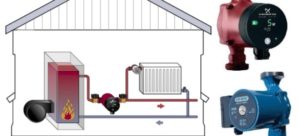 Steam boilers according to their scope of application are divided into two large classes: domestic and industrial.
Steam boilers according to their scope of application are divided into two large classes: domestic and industrial.
Household appliances generate saturated water vapor, which is used as a coolant for heating systems. As a rule, such systems operate on solid or liquid fuel.
Industrial boilers use superheated steam under high pressure, which significantly increases the efficiency of the devices. Coal, fuel oil, gas or atomic decay energy are used as fuel for industrial installations.
Industrial ones are used in the electrical power industry, manufacturing, construction, etc. These devices can be called the basis of the industry. Here are just a few examples of industrial applications:
- steaming of concrete structures;
- sterilization and disinfection in the food industry;
- electricity generation;
- driving actuators of machine tools and mechanisms.




